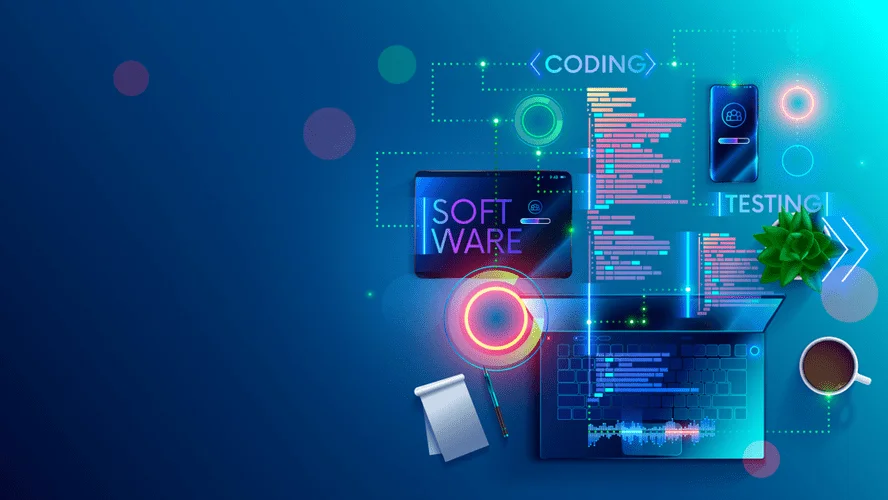Convolutional neural networks, also called CNNs, are a household of neural networks used in pc vision. The time period “convolutional” refers again to the convolution — the process of mixing the results of a perform with the method of computing/calculating it — of the input image with the filters within the network. These properties can then be used for purposes similar to object recognition or detection. The different two kinds of types of rnn lessons of synthetic neural networks include multilayer perceptrons (MLPs) and convolutional neural networks.
What Is Recurrent Neural Networks (rnns)?
Visualizing the model’s predictions against the precise time collection information may help you perceive its strengths and weaknesses. Plotting the anticipated values alongside the true values supplies an intuitive method to determine patterns, developments, and discrepancies. Interpreting the results includes analyzing the evaluation metrics, visualizations, and any patterns or trends observed. The Many-to-Many RNN kind processes a sequence of inputs and generates a sequence of outputs. This configuration is ideal for duties where the enter and output sequences need to align over time, usually in a one-to-one or many-to-many mapping. In this article, we will explore the core ideas of RNNs, understand how they operate, and talk about why they are essential for duties the place earlier inputs in a sequence influence future predictions.
- The key concept behind RNNs is that the hidden state at each time step serves as a abstract or representation of all the earlier inputs seen as much as that point.
- Sentiment evaluation is an effective instance of this type of network where a given sentence could be classified as expressing positive or adverse sentiments.
- RNNs, which are formed from feedforward networks, are much like human brains in their behaviour.
- This configuration is commonly utilized in tasks like part-of-speech tagging, where each word in a sentence is tagged with a corresponding part of speech.
- For instance, in the sentence “They noticed her duck,” the word “duck” can be interpreted as a verb or a noun.
Functions Of Recurrent Neural Networks
Because a feed-forward community only considers the current enter, it has no notion of order in time. It simply can’t bear in mind something about what happened up to now besides its coaching. In a feed-forward neural community, the data solely strikes in a single course — from the enter layer, via the hidden layers, to the output layer.
Step Three: Create Sequences And Labels

In RNNs, activation functions are applied at each time step to the hidden states, controlling how the community updates its inside memory (hidden state) primarily based on present enter and past hidden states. The major kinds of recurrent neural networks include one-to-one, one-to-many, many-to-one and many-to-many architectures. The key thought behind RNNs is that the hidden state at each time step serves as a abstract or illustration of all the previous inputs seen up to that point. This hidden state allows the network to capture information about the context and temporal dynamics of the information. The bidirectional recurrent neural network (BRNN) was proposed by (Schuster and Paliwal, 1997) to beat the limitations of the common (unidirectional) RNN that solely utilizes past input data. BRNNs enhance the aptitude of RNNs by processing information in each forward and backward instructions, thereby utilizing all obtainable input info from the previous and future of a selected timeframe.

Step 2: Decide How A Lot This Unit Provides To The Current State
This is especially helpful in applications the place the info arrives in a sequential manner, and the mannequin needs to adapt and learn from every new enter. RNNs can replace their hidden state and internal parameters as new knowledge is processed, making them suitable for online learning eventualities. As defined above, we input one example at a time and produce one result, both of that are single words. The difference with a feedforward community comes in the fact that we also need to be knowledgeable concerning the previous inputs earlier than evaluating the outcome.
The output [Tex]Y[/Tex] is calculated by applying [Tex]O[/Tex], an activation perform, to the weighted hidden state, where [Tex]V[/Tex] and [Tex]C[/Tex] symbolize weights and bias. For instance, for picture captioning task, a single image as input, the model predicts a sequence of words as a caption. Long short-term reminiscence (LSTM) networks have been invented by Hochreiter and Schmidhuber in 1995 and set accuracy data in multiple applications domains.[35][36] It became the default choice for RNN structure. Here’s a easy Sequential model that processes integer sequences, embeds each integer right into a 64-dimensional vector, after which uses an LSTM layer to deal with the sequence of vectors. It employs the identical settings for every enter because it produces the identical outcome by performing the same task on all inputs or hidden layers.
After this, the network is rolled back up and weights are recalculated and up to date preserving the errors in mind. RNNs share the identical set of parameters across all time steps, which reduces the variety of parameters that need to be discovered and may lead to better generalization. For instance, a CNN and an RNN could be used collectively in a video captioning application, with the CNN extracting features from video frames and the RNN utilizing those options to write captions. Similarly, in weather forecasting, a CNN may establish patterns in maps of meteorological knowledge, which an RNN could then use along side time sequence information to make climate predictions. When the RNN receives enter, the recurrent cells combine the new knowledge with the information obtained in prior steps, utilizing that beforehand received enter to tell their analysis of the new knowledge.
LSTMs assign data “weights” which helps RNNs to both let new data in, forget info or give it significance enough to impact the output. Within BPTT the error is backpropagated from the final to the primary time step, while unrolling all the time steps. This permits calculating the error for every time step, which allows updating the weights. Note that BPTT may be computationally expensive when you may have a excessive variety of time steps. While feed-forward neural networks map one input to a minimum of one output, RNNs can map one to many, many-to-many (used for translation) and many-to-one (used for voice classification). Sequential information is mainly just ordered data in which associated things follow one another.
This looping mechanism permits RNNs to remember previous information and use it to influence the processing of current inputs. Recurrent neural networks might overemphasize the significance of inputs due to the exploding gradient drawback, or they may undervalue inputs due to the vanishing gradient drawback. BPTT is mainly only a fancy buzzword for doing backpropagation on an unrolled recurrent neural network.
Only unpredictable inputs of some RNN in the hierarchy turn out to be inputs to the next higher degree RNN, which due to this fact recomputes its inside state solely rarely. Each larger stage RNN thus research a compressed representation of the information within the RNN beneath. This is completed such that the enter sequence may be exactly reconstructed from the representation at the highest degree. The normal methodology for coaching RNN by gradient descent is the “backpropagation through time” (BPTT) algorithm, which is a particular case of the final algorithm of backpropagation. The illustration to the best could additionally be deceptive to many because practical neural network topologies are incessantly organized in “layers” and the drawing gives that appearance. However, what seems to be layers are, in reality, totally different steps in time, “unfolded” to supply the looks of layers.
Attention mechanisms enhance RNNs by focusing on related time steps or options during predictions. Combining RNNs with other fashions, just like the convolutional neural network model CNN-RNN or Transformer-RNN, Artificial Neural Networks ANN-RNN, may additional boost efficiency for time collection duties. As time collection knowledge becomes more advanced and numerous, advanced methods are important to boost the capabilities of Recurrent Neural Networks (RNNs). Multi-variate time collection knowledge featuring a quantity of interconnected variables could be effectively handled by extending RNNs to accommodate multiple input options and output predictions.

The information contains day by day trends similar to opening price, highest value, lowest value, and shutting value. The information is normalized to the vary [0, 1] to make sure consistency and suitability for training the neural community. However, when the gradient will increase exponentially, it results in an exploding gradient downside, making the RNN unstable. In such circumstances, the gradients turn into excessively massive, inflicting the RNN to behave erratically.
This section explores all the essential steps for building and training an RNN mannequin. The course of contains information preparation, defining the model architecture, building the mannequin, fine-tuning hyperparameters, after which evaluating the model’s performance. Time series prediction, or time series forecasting, is a branch of knowledge evaluation and predictive modeling that goals to make predictions about future values based on historic knowledge factors in chronological order. In a time sequence, information is collected and recorded over regular intervals of time (i.e. hourly, day by day, month-to-month, or yearly). Examples of time collection data embrace stock prices, climate measurements, gross sales figures, website site visitors, and extra. This algorithm known as backpropagation via time (BPTT) as we backpropagate over all earlier time steps.
Transform Your Business With AI Software Development Solutions https://www.globalcloudteam.com/ — be successful, be the first!
